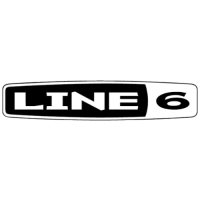Tutorial: RAMBLINGS
7•7
SOMEBODY ELSE’S SOUNDS
One of the things that’s fun to do with the AX2 is create sounds based on some of your
favorite guitar players’ signature tones. This is also a great way to train your ears for
developing your own sounds. As you might have noticed when looking over the preset
chart, we’ve done a fair number of these ourselves. Here are a few tips on how to start.
First, if you can find an interview with the artist where he (or she) talks about what
gear they used on the particular song you’re trying to nail down, see if the stuff they
used is in the AX2 (chances are pretty good that at least some of it is in there). If you
can find an interview with the engineer or producer who worked on a song, that’s even
more of a place to start. Second, remember that a lot of an artist’s sound is in
individual playing style; pick attack, phrasing, note choice, palm muting, etc… The
guitar/pickup combination used is important too. You probably won’t nail Slash’s tone
with a Telecaster, for instance, or Roy Buchanan’s with a Les Paul. If you can’t find
what an artist used on a particular song, don’t give up hope. Most folks use the same
general guitar and amp types and don’t switch around a lot, so any interview should
give you an idea of what type of gear is being used. Most of the rest of it is up to your
ears. The more you work on this type of sound development, the faster you’ll be able to
capture settings and the easier it will be to hear small differences between sounds.
DON’T BE AFRAID TO EXPERIMENT
Just because a Marshall is normally used with a 4x12” cabinet doesn’t mean that you
can’t set up a preset with the Brit Classic (modeled after a Marshall Plexi) through a
4x10” or even a 1x12” cabinet. While I wouldn’t do it live, if I’m recording, I’ll
sometimes run the bass guitar through the AX2 with something like the Tweed Blues
(Tweed Bassman) sound. Try recording a direct out from your guitar direct to tape (or
hard disk, if you’re that type) and run it back through the amp on mixdown. That way
you can experiment with different amp types without having to re-track the guitar
parts. If you record with a computer, you can even use your MIDI sequencing software
to switch amp types or effects during recording or mixdown. In true do-it-yourself
spirit, don’t figure that something won’t work until you’ve tried it!

